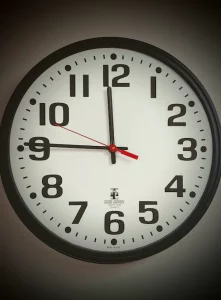
Why do visual cues play a pivotal role in memory care?
Because these cues offer valuable information and support to individuals experiencing memory loss, confusion, and communication challenges.
Visual cues play a pivotal role in any environment where people with dementia are cared for, including memory care residences, home settings, adult day centers, and more.
Here are examples of how they are beneficial in settings catering to those with dementia:
Enhance Orientation: In any environment, visual cues assist individuals in orienting themselves. Clear signage indicating rooms, common areas, and exits can help individuals recognize and navigate their surroundings.
Reduce Anxiety: Regardless of the setting, familiar visual elements like photographs, artwork, or decorationsevoke positive emotions and create a comforting atmosphere, alleviating anxiety stemming from cognitive impairments.
Support Independence: Visual cues, such as labels on personal items or storage spaces, can allow individuals to operate with a greater degree of independence, even in their own homes or community centers.

Assist with Routine Tasks: For those with memory impairments, visual aids like diagrams or pictures can be vital in guiding them through daily tasks like dressing or meal preparation.
Video by Dr. Cameron J. Camp
Encourage Engagement: Visual reminders related to hobbies or interests can spark memories, prompting individuals to partake in activities that bring joy and purpose.
Promote Safety: In all environments, it’s vital to highlight potential hazards. Visual cues such as signs indicating slippery surfaces or obstructions can be lifesaving.
Enhance Communication: Visual aids can bridge communication gaps between caregivers, families, and those with dementia, especially when verbal communication becomes challenging.
Minimize Frustration: Visual cues provide a more effortless mode of communication, reducing the frustration often experienced when trying to remember or express oneself.
Visual Cues Play a Pivotal Role in Memory Care
 Maintain Routine: Familiarity is comforting. Tools like calendars, clocks, and visual schedules can help maintain a sense of routine, whether in a care residence or a home environment.
Maintain Routine: Familiarity is comforting. Tools like calendars, clocks, and visual schedules can help maintain a sense of routine, whether in a care residence or a home environment.
Preserve Dignity: Loss of independence can be disheartening. Visual aids empower individuals to perform tasks without consistent assistance, fostering self-worth.
Facilitate Social Interaction: Visual prompts, such as photos or displays, can foster conversation and social interaction, vital in all care settings.
In various environments catering to individuals with dementia, visual cues act as indispensable tools.
They offer a blend of support, guidance, and solace. By crafting a recognizable and supportive atmosphere, visual cues enhance the well-being, autonomy, and overall quality of life for those with cognitive impairments.
You can read more interesting articles…click here.





